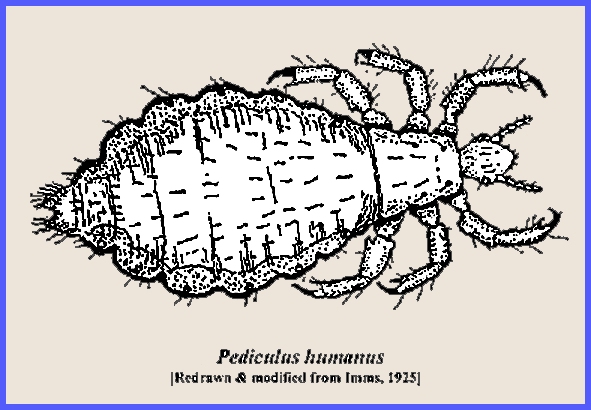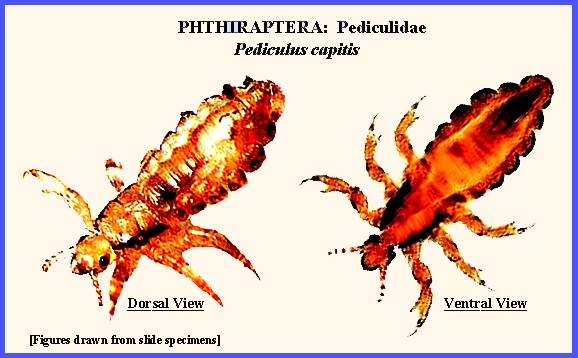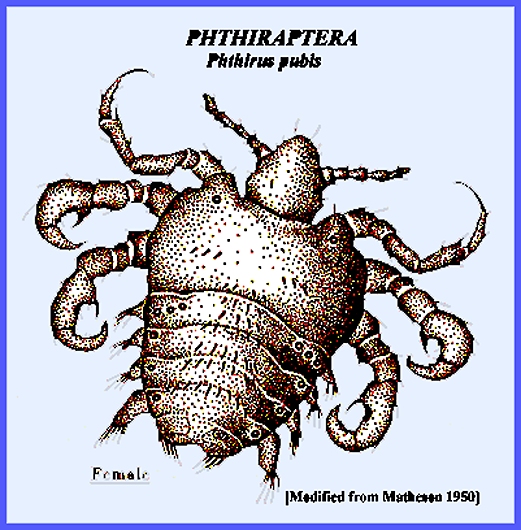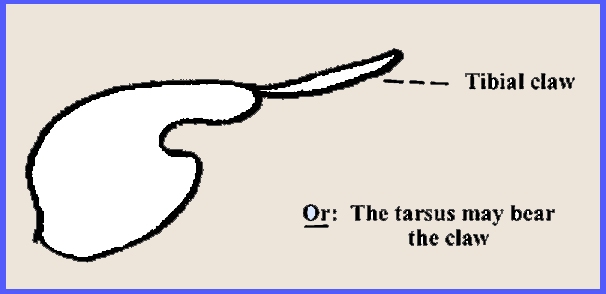File:
<phthiraptera.htm> (Entomology),
(Invertebrates), (General
Index)> <Invertebrate Bibliography> <Glossary> <Site Description>
< Home>
|
Entomology: PHTHIRAPTERA 1 Kingdom: Animalia, Phylum: Arthropoda Subphylum: Hexapoda: Class: Insecta: Order: Phthiraptera = Anoplura (Contact)
Please CLICK on underlined
categories to view and on included illustrations to enlarge: Depress Ctrl/F to search for subject matter:
General Summary of Phthiraptera
The evolution of these lice with their
hosts is closely paralleled. They are
small wingless insects. Their mouthparts are adapted for piercing the skin
and sucking the blood of their hosts. The eyes are poorly developed or
absent. The legs are very short and the single-jointed tarsus carries a large
curved claw that is well adapted for clinging to the host. The thoracic segments are fused, and a
flattened abdomen of nine segments has large pleural areas allowing the body
to swell on feeding. There is no
metamorphosis.
The stylet complex can be extended so as to make contact
with the skin. Into the wound is poured the salivary fluid that keeps blood
from coagulating, and the mouth funnel is plunged in to enable the blood to
be sucked up by the pharyngeal pump.
During development the 1st maxillae unite to form the dorsal stylet,
the ventral being formed by the labium. A pair of mandibles is also present
but these are undeveloped.
Humans develop a rash from the salivary
secretions. They are also vectors of Rickets and Relapsing Fever. Pediculus
humanus, the body louse is
associated with the spread of many diseases, such as typhus and relapsing
fever. This insect also transmitted the disease known as Trench
Fever, which reduced Napoleon's
Army and was prevalent in all war areas during World War I (see ent79): The group as a
whole includes the most important vectors of Typhus
Fever. During World War II, DDT treatment of the
Italian population was required to rid it of a louse epidemic. Although the crab louse is not a disease
vector, it can be contacted either through bodily contact or indirectly from
bedding, etc. It is known to attack
only humans and wild gorillas in Africa. Sucking lice rank
number one in livestock pests with three different species attacking cattle,
two species goats and one species hogs. Please
also view Medical
Importance Cleanliness is
of the utmost importance in keeping down infestations of sucking lice. For livestock it is important to maintain
the animals in a healthy state. DDT and Rotenone
applied twice a year in autumn and spring has been effective for the control
of both adults and eggs. ------------------------------------------- Details
of Insect Taxonomic Groups Examples of
beneficial species occur in almost every insect order, and considerable
information on morphology and habits has been assembled. Therefore, the principal groups of insect
parasitoids and predators provide details that refer to the entire class
Insecta. These details are available
at <taxnames.htm>. ============== |





